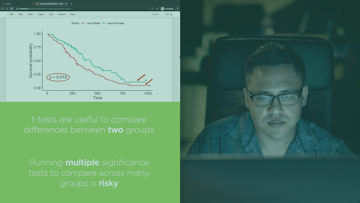
Before machine learning and Python made statistics a subject of MASS popular appeal, an entire generation of applied statisticians learned their craft from the famous textbook named “Modern Applied Statistics with S” by Venables and Ripley. The “S” referred to in the book’s title is the precursor of the R statistical software, which is so popular and effective for statistical analysis. The influence of this seminal work is so strong, that R actually contains a package named MASS, an acronym for the book’s title. In this course, Applying the Mathematical MASS Model with R, you will gain the ability to use the datasets, predictive...
Read more
Good to know
Save this course
Activities
Career center
Statistician
Survival Analyst
Operations Research Analyst
Quantitative Analyst
Machine Learning Engineer
Data Engineer
Risk Analyst
Biostatistician
Underwriter
Web Analyst
Product Manager
Data Scientist
Market Researcher
User Experience (UX) Researcher
Teacher
Reading list
Share
Similar courses
OpenCourser helps millions of learners each year. People visit us to learn workspace skills, ace their exams, and nurture their curiosity.
Our extensive catalog contains over 50,000 courses and twice as many books. Browse by search, by topic, or even by career interests. We'll match you to the right resources quickly.
Find this site helpful? Tell a friend about us.
We're supported by our community of learners. When you purchase or subscribe to courses and programs or purchase books, we may earn a commission from our partners.
Your purchases help us maintain our catalog and keep our servers humming without ads.
Thank you for supporting OpenCourser.


